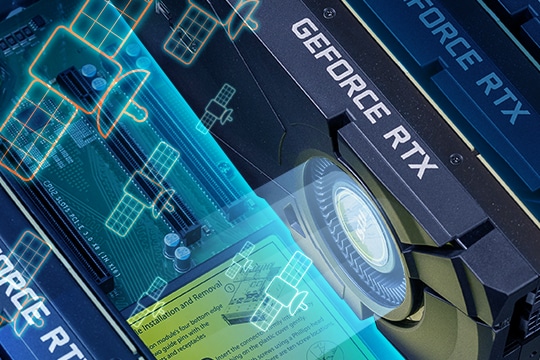Skydel Channels Capabilities per GPU
Skydel Channels Capabilities per GPU
Orolia’s Skydel uses GPU-accelerated computing to generate signals in real time. Depending on the signal type and desired bandwidth, the number of channels may vary. Hence, the number of channels is not a fixed value. The table below provides typical values for the number of available channels at 10 and 50 MHz bandwidth, for different GPU models used in Skydel configurations.
GPU Models
| GeForce GTX 1050Ti | GeForce GTX 1080 | GeForce GTX 1080Ti | ||
|---|---|---|---|---|
| Bandwidth | 10 Mhz | 140 | 180 | 240 |
| Bandwidth | 50 Mhz | 50 | 90 | 110 |
Notes: The values above provided are for illustrative purposes only; several factors can influence these values. Numbers shown are for a single GPU configuration: combine multiple GPUs to increase the number of signals. Contact Us for an Orolia engineer to review your project needs to propose the optimal hardware configuration.
Further notes about capabilities and simulator channels
Skydel uses a pool of processing resources provided by the GPU to generate signals. The engine behind Skydel ensures that there are always computational resources allocated for the simulation being executed.
Therefore, Skydel’s performance and capabilities are not tied or limited to a specific number of channels, as it would be if these were provided by hardware components. In traditional FPGA-based architecture, resources are dedicated for each channel, where a channel is the capacity to generate one satellite signal. This does not apply to Skydel. Thus, unlike traditional FPGA-based simulator manufacturers, we rarely use the term channel to characterize our GNSSGlobal navigation satellite system (GNSS): A general term describing any satellite constellation that provides positioning, navigation, and timing (PNT) services on a global or regional basis. See also simulator capabilities.
If a single channel equals a single satellite signal, then even an entry-level Skydel configuration can generate signals equivalent to a 30+ channel simulator. Due to the nature of Skydel, and depending upon the number of signals, their bandwidth, multipath and interference generated, the channel capacity of Skydel varies and is entirely flexible depending upon the simulation scenario.
The bottom line is that Skydel is based on a software-defined architecture that provides a lot of power, and that offers the best flexibility for its users. Throughout the simulation, available processing power is dynamically allocated to produce whichever signal is needed. In most cases, a single GPU is more than sufficient, but should an extreme scenario require it, additional GPUs can be added to increase the signal generation capabilities even more while retaining a compact form factor.
To read more about the benefits of this approach, read our blog post on GPU-Accelerated Computing Perks for GNSS Simulation.


